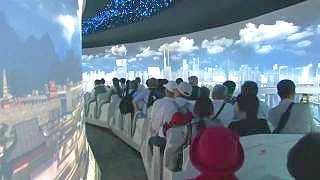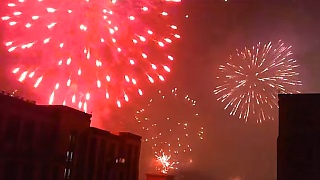TongLi, lies in the outskirts of SuZhou, JiangSu province in east China, about 100 km (62 miles) north-west of ShangHai. This charming water town retains many of the features of the ancient Kingdom of Wu.
[640],shadow=true,start=,stop=
Live more ...
 TongLi 同里
TongLi 同里TongLi, lies in the outskirts of SuZhou, JiangSu province in east China, about 100 km (62 miles) north-west of ShangHai. This charming water town retains many of the features of the ancient Kingdom of Wu.
[640],shadow=true,start=,stop=

|
Near the city of YanTai.
|

|
|

|
The China pavilion and the Urbanisation pavilion.
'Better City, Better Life' : 1st May to 31st October 2010.
|

|

|
|

|
What it is like in a Chinese city during the Spring Festival ...
Warning - loud !
|

|
With Walk East ...
|